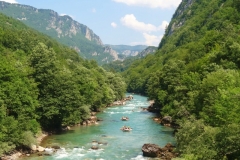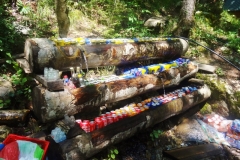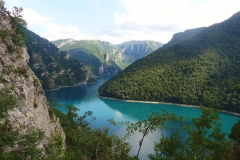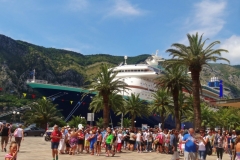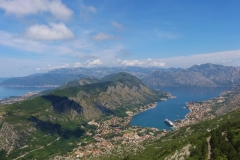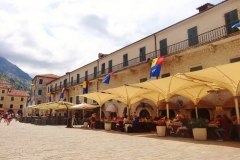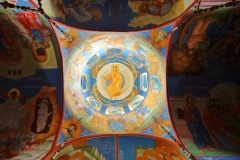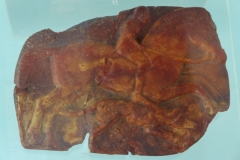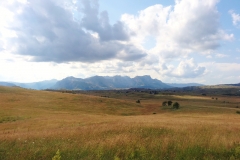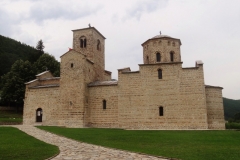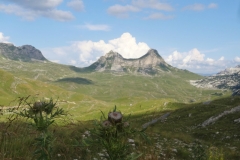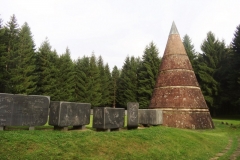The Wilds of Montenegro
Black Mountain in the Balkans

This summer I returned to Montenegro. When I first went to this small country in South East Europe it had only recently gained independence. My trip then focussed on the country’s beautiful Adriatic coastline and the fjords around Kotor. This year, I also ventured into the interior, which proved to be no less spectacular. My experience was made even more interesting by travelling with a Montenegrin friend who – justifiably – was keen to show me the delights of his homeland.
Click on the photos to see the captions.
Montenegro – or Crna Gora to the locals – means ‘black mountain’ and, indeed, against the late evening sky the outline of the mountains forms a formidable silhouette. Once part of Yugoslavia, Montenegro gained independence in 2006 following a referendum. Like many parts of the Balkans, the rugged lands that are modern day Montenegro have an eventful past.
Part of the Byzantine Empire until 1042, they later came under the sway of the Ottomans. The inhabitants repeatedly rebelled against the invaders, defeating them in the Great Turkish War of 1693-99. The Venetians also intervened in Montenegro’s affairs until, in 1797, the country was absorbed into the sprawling Austro-Hungarian Empire.
In 1878 Montenegro became an independent principality and in 1910 a kingdom for eight short years. After the First World War, it became part of Yugoslavia.
My trip to this small country of just over 600,000 people was – fortunately – less eventful than its past, but was both fun and interesting.
First activity on our list was white water rafting in the Tara River Canyon, a UNESCO World Heritage Site and part of the Durmitor National Park. At 78 km in length and 1300m deep it is Europe’s largest and deepest gorge and the second longest in the world after the Grand Canyon.
We rafted along the Tara River from Brstnovica to Šćepan Polje, with the densely wooded canyon rising on either side: Bosnia-Herzegovina on the right and Montenegro on the left. The foaming, jade coloured water seemed deep enough, but the captain of our inflatable dinghy told us that in spring the river level was three metres higher with snow melt from the mountains.
After rafting, we headed deeper into the country. Steep, thickly forested mountainsides and lakes of vivid turquoise gave way to what looked like Alpine pastures, and then to grassy plateaux dotted with sheep, parts of which reminded me of Derbyshire in England.
We visited my host’s home town of Berane, a modest settlement off the tourist track, but in an area with considerable potential for attracting nature lovers and anyone with an interest in experiencing traditional rural life. ‘Inner’ Montenegro is a part of Europe where wild flowers still fill the fields, people hand-cut meadow grass with scythes and locals make their own cheese.
Returning to the picturesque coast I saw tourism had developed a lot since my last visit. Yet Montenegro, it seems, is keen to avoid the mistakes of some other countries. New buildings generally fit in well with the surroundings and care is being taken to preserve the country’s architectural heritage. The government has decided to make tourism an important part of the economy, but to focus on the high end of the market. At the town of Tivat a former naval shipyard has been transformed into Porto Montenegro, a marina for yachts and work is apace on luxury apartments.
Montenegrin food is simple but tasty with the focus being on fresh ingredients. As one might expect, along the coast fish is often on the menu. Otherwise, meat and potatoes are the staples, with vegetables (invariably Swiss chard) playing a minor role. In any case, Montenegrins seem to thrive on their diet: they are apparently the tallest people in Europe.
Despite Montenegro’s aspiration to become the Monaco of the Eastern Mediterranean, one does not have to be rich to enjoy this corner of the Balkans and all it has to offer. The spectacular nature alone is worth the trip, but this is a country with much more to discover.
RETURN
